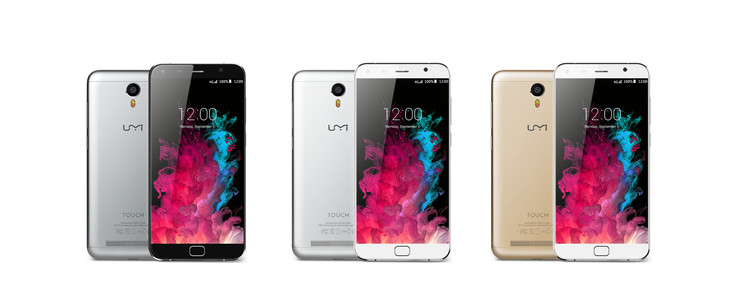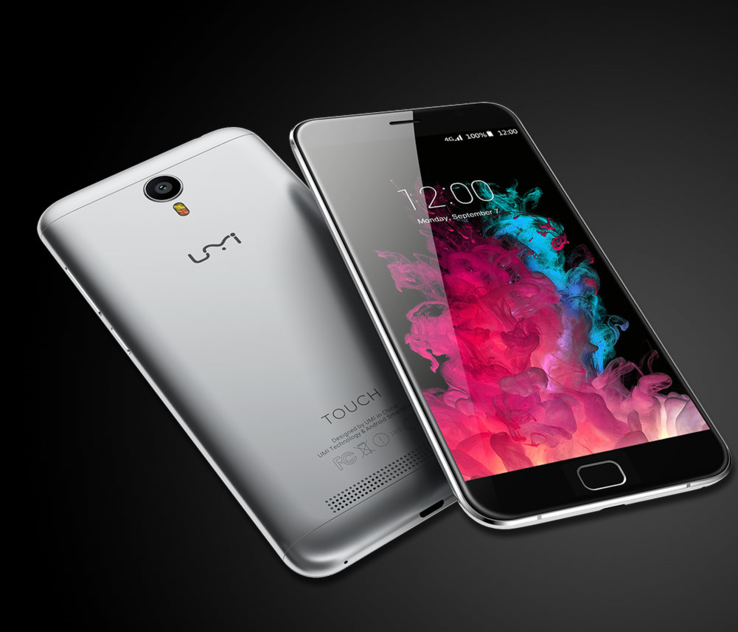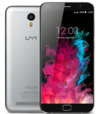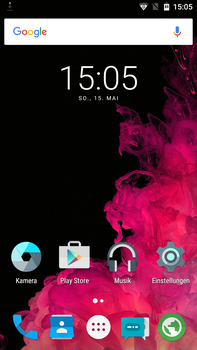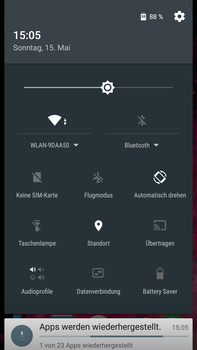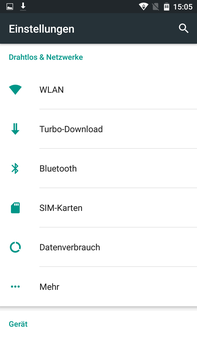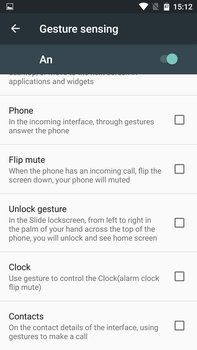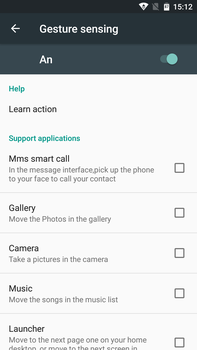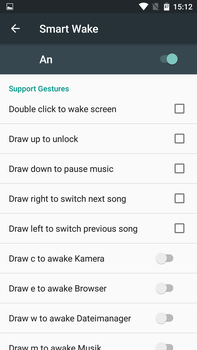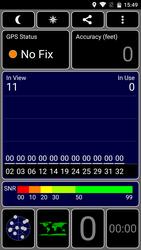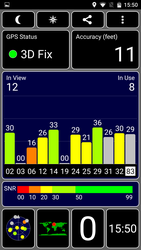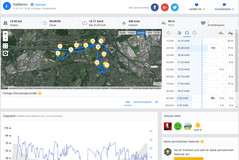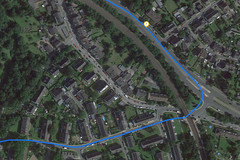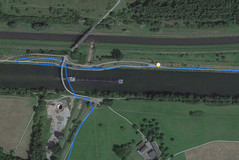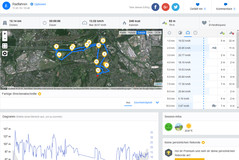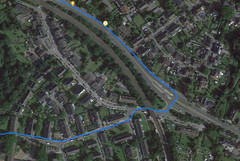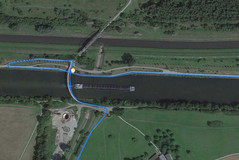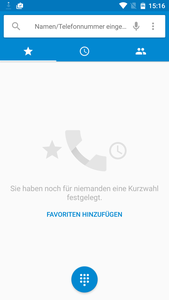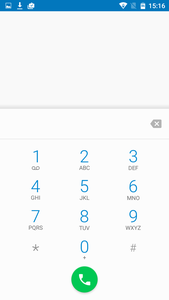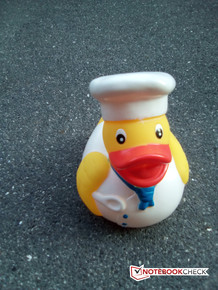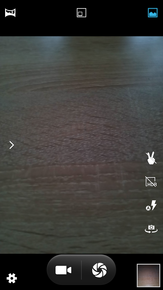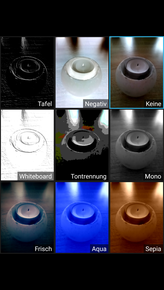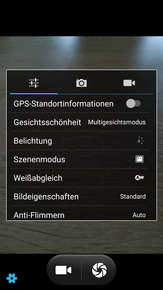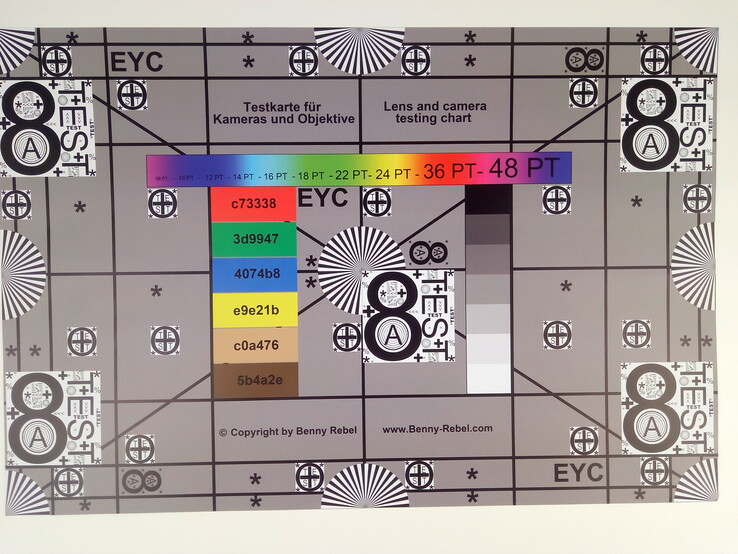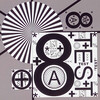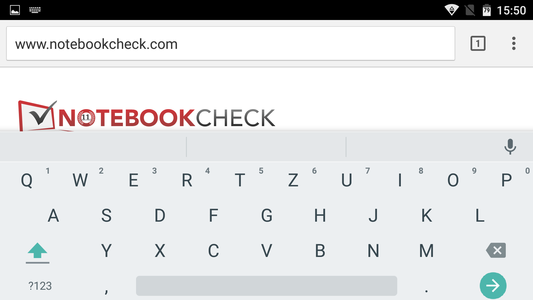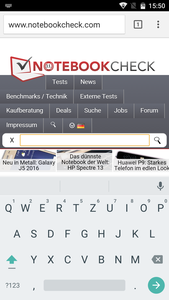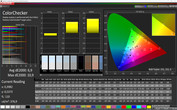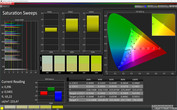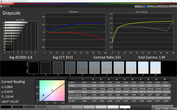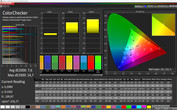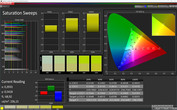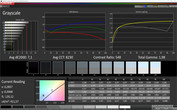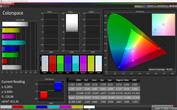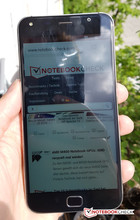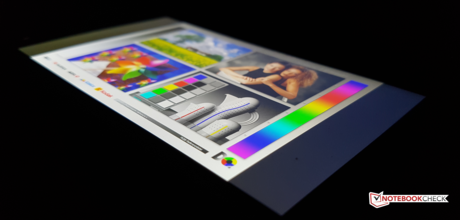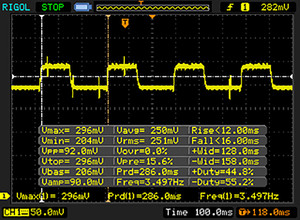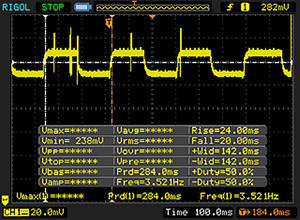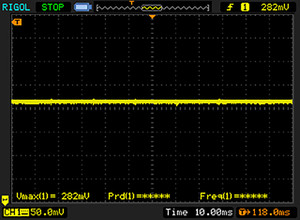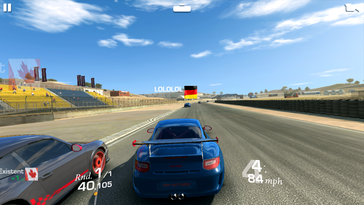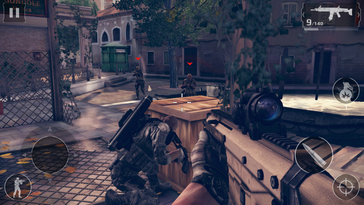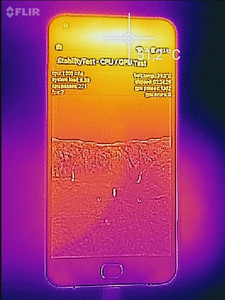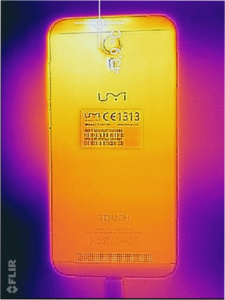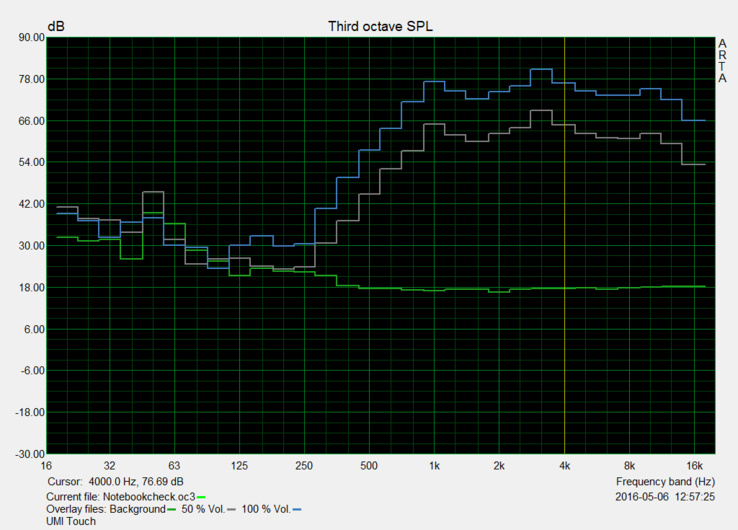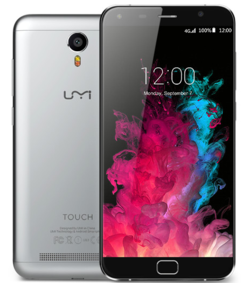UMi Touch Smartphone Review
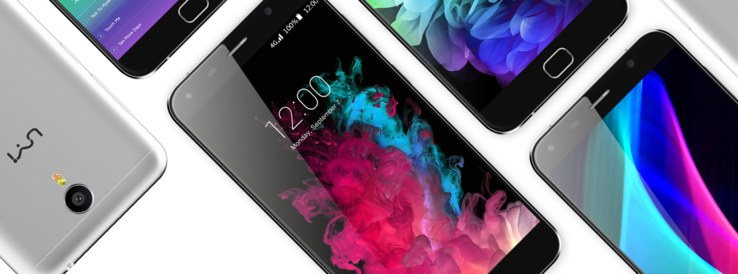
For the original German review, see here.
The technical specs of the 5.5-inch UMi Touch suggest a mid-range handset rather than an entry-level device. The Chinese manufacturer's dual-SIM LTE smartphone for roughly 130 Euros (~$145) is very well equipped with 16 GB of expandable storage, 3 GB of RAM, a 4000 mAh battery, fingerprint scanner, Mediatek octa-core CPU, 13.3 MP camera and an IPS panel with a resolution of 1920x1080 pixels. The aluminum casing with a height of 8.8 millimeters (~0.35 in) is also very slim.
Since UMi does not sell its products directly on the German market, the UMi Touch can only be purchased via import companies. Partner shops that sell the handset are listed on the manufacturer's website. It is available in black, gray and silver.
The smartphone opponents in this price range can only compete conditionally with the technical specs of UMi's Touch. Among them we find Coolpad Porto S, Oukitel K4000 Pro and ZTE Blade A452 as possible alternatives. However, the latest entry-level Lumia 550 by Microsoft could be worth considering.
Case
A lightly curved 2.5D glass front by Corning Gorilla (Glass 3) protects the 5.5-inch screen of UMi's Touch. The display has a surface ratio of approximately 71 percent. In contrast to the rest of the casing, the milled transition between glass and casing features a glossy finish and is a bit sharp-edged. The aluminum back curved toward the sides has a high quality and pleasant feel. Fingerprints are barely visible thanks to the matte finish. Although the rear-facing camera in UMi's Touch juts out slightly from the casing, the device hardly rocks when placed on a surface.
The gaps of the plastic parts are irregular in the casing's upper and lower sides of in our review sample, and they are not flush with the non-removable metal back cover in many places. The SIM card slot is not incorporated ideally in the casing and visibly protrudes even if only slightly.
The volume and power controls are well built and barely wobble. The pressure points of the lateral buttons are a bit better than that of the home button situated on the front. Although the home button's build quality is not bad, the class differences become apparent when compared with Samsung's Galaxy S7 Edge.
The smartphone's stiffness does not give reason for complaint. Cracking noises are not audible under high pressure, but wave formation becomes visible on the IPS LCD panel. This should not be a problem for practical use, though.
Connectivity
The installed eMMC memory has a capacity of 16 GB. A bit less than 11.2 GB are left after initial use. Inserting a micro-SD card can expand the storage by up to 128 GB, and applications can be moved to the external memory via App2SD. The micro-USB 2.0 port on the handset's lower edge can be used for recharging the smartphone and data sharing with a computer, and also provides OTG (on-the-go) support. Peripherals can be connected to the smartphone via an OTG adapter.
Wireless transmission of screen content to external monitors is also supported and functioned very well in the test with a Sony Android TV.
Software
UMi preloads the latest Android 6.0 Marshmallow on its entry-level smartphone. The manufacturer relies on an almost pure stock Android user interface that has barely been modified compared with Google's user interface in terms of looks. Furthermore, UMi installs only a few applications on its Touch - bloatware is not preloaded. However, UMi is inconsistent in system language. Although we selected German as the system language, English is used in many places.
A unique selling point of UMi's Touch: The user can freely select the operating system at a later point. The firmware can be configured as desired after buying the device via a proprietary app (ROOTJOY). The following custom ROMs are available: MIUI, VIBE UI, FLYME OS, 360 OS and LeWa OS. Even Windows Phone OS version 8.1 can be installed on UMi's Touch afterward.
Communication & GPS
The dual-SIM smartphone can access mobile Internet via two SIM cards. However, only one slot supports LTE; the other is limited to the GSM network. Quad-band GSM, dual-band UMTS, and the LTE 800, 1800 and 2600 MHz frequencies are supported - which include the LTE band 20 (800 MHz) important in German rural regions. The connection quality and reception in a major city are satisfactory. Bluetooth in version 4.1 is present for wireless near field communication.
The Wi-Fi module in UMi's Touch supports the IEEE 802.11 a/b/g/n standards, and thus it transmits in both the 2.4 and 5.0 GHz frequency bands. The range is satisfactory. The attenuation of almost -50 dBm is comparatively low in the direct vicinity of the router (Telekom Speedport, W921V), but it reaches up to -70 dBm in the next room.
UMi's Touch utilizes the GPS and GLONASS satellite networks for localization, which functioned well and with an accuracy of approximately 4 meters (~13 ft) outdoors. It could not find satellites when indoors. We also test the accuracy on a roughly 12 kilometer (~7.5 miles) bike tour, and compare the results with Garmin's Edge 500 navigation system. Around 150 meters (<500 ft) separates the entry-level smartphone from Garmin's Edge 500 at the end - a good rate that should suffice for navigating in a car or on a bike.
Telephone & Call Quality
We liked the call quality of UMi's Touch in the test. The caller was easily heard and we could be understood well. We performed the test via Skype as well as via mobile (E) network.
UMi uses Google's stock phone application in Android 6.0 design. The interface design is plain and straightforward.
Cameras
UMi installs the same camera with an aperture of f/2.2 as Sony in the Xperia Z1 on the rear. The CMOS lens (Sony, IMX 328) has a resolution of 13.3 MP, and dual-tone LED flash support. 4864x2726 pixels ensure high-detail photos with good color reproduction and good white balance. Photos shot with UMi's Touch in good light conditions look sharp, and only a little noise is visible. The camera's quality is on a very high standard for a handset of this price range.
The 13.3 MP camera finds its limits in varying light conditions (shadow, sun) - exposure issues are sometimes noticed here (scene 1, flower). The dynamic range is also sometimes too limited and the photo darkens slightly (scene 2, surroundings). Furthermore, the auto focus' sharpness is not ideal in macro-photos (scene 3, room), and focusing needs a relatively long time.
The front camera also features a CMOS photo sensor (Hynix Hi-553) with a resolution of 5.3 MP. Its maximum aperture is f/2.8 and an LED also supports it. Photos are good for an entry-level smartphone, and it is also suitable for video calls. UMi's Touch records photos in Full HD (1920x1080 pixels) at 30 FPS. The recording quality drops to 720p at 30 FPS when using the front camera.
Accessories & Warranty
UMi's Touch is shipped with a modular power supply that has a nominal output of 5 watts (1 ampere, 5 volts) and a USB cable. UMi also optionally offers a special flip cover, a transparent sleeve and a screen protector for its smartphone.
A 12-month warranty is included.
Input Devices & Handling
The capacitive multi-touchscreen in UMi's Touch responds quickly and reliably into the border areas. Furthermore, the glass surface provides good gliding qualities. UMi relies on Google's proven stock Android onscreen keyboard.
The handset is controlled via a physical home button and two capacitive icons for back and menu. In contrast to stock Android, their positioning is swapped as known from earlier generations of Samsung handsets. Prolonged pressure on the home button opens the multitasking menu.
An active fingerprint scanner is also integrated in the home button. It functioned quickly in the test - the manufacturer states 0.1 to 0.3 seconds. The identification rate is good, although the finger sometimes has to be repositioned on the sensor for identification. Both the speed and recognition rate of the biometric ID via fingerprint is approximately on par with that of Samsung's Galaxy S7 Edge.
Display
The 5.5-inch LCD screen in UMi's Touch has a resolution of 1920x1080 pixels. That leads to a pixel density of approximately 401 PPI and content looks very sharp. The achieved resolution is more than sufficient for everyday use.
The screen's maximum brightness of 436 cd/m² is sufficiently bright, and the illumination of 91 percent is very homogeneous. The panel even achieves 467 cd/m² when the adaptive ambient light sensor for controlling screen brightness is enabled. Only 412 cd/m² could be measured in the screen brightness test with evenly distributed bright and dark areas (APL 50).
| |||||||||||||||||||||||||
Brightness Distribution: 91 %
Center on Battery: 424 cd/m²
Contrast: 785:1 (Black: 0.54 cd/m²)
ΔE ColorChecker Calman: 6.9 | ∀{0.5-29.43 Ø4.78}
ΔE Greyscale Calman: 6.8 | ∀{0.09-98 Ø5}
Gamma: 1.99
CCT: 8131 K
| UMI Touch Mali-T720 MP4, MT6753, 16 GB eMMC Flash | Coolpad Porto S Mali-T720, MT6735, 8 GB eMMC Flash | Oukitel K4000 Pro , MT6735, 16 GB eMMC Flash | ZTE Blade A452 Mali-T720, MT6735, 8 GB eMMC Flash | Microsoft Lumia 550 Adreno 304, 210 MSM8909, 8 GB eMMC Flash | Samsung Galaxy S7 Edge Mali-T880 MP12, Exynos 8890, 32 GB UFS 2.0 Flash | |
|---|---|---|---|---|---|---|
| Screen | -13% | -5% | -2% | 5% | 49% | |
| Brightness middle (cd/m²) | 424 | 407 -4% | 360 -15% | 446 5% | 536 26% | 554 31% |
| Brightness (cd/m²) | 415 | 403 -3% | 367 -12% | 411 -1% | 535 29% | 552 33% |
| Brightness Distribution (%) | 91 | 92 1% | 89 -2% | 83 -9% | 95 4% | 96 5% |
| Black Level * (cd/m²) | 0.54 | 0.5 7% | 0.36 33% | 0.65 -20% | 0.62 -15% | |
| Contrast (:1) | 785 | 814 4% | 1000 27% | 686 -13% | 865 10% | |
| Colorchecker dE 2000 * | 6.9 | 7.9 -14% | 9.01 -31% | 6.29 9% | 5.81 16% | 1.59 77% |
| Colorchecker dE 2000 max. * | 10.9 | 18.2 -67% | 12.58 -15% | 12.3 -13% | 2.56 77% | |
| Greyscale dE 2000 * | 6.8 | 8.9 -31% | 8.67 -28% | 5.58 18% | 7.72 -14% | 2.01 70% |
| Gamma | 1.99 111% | 2.46 89% | 2.66 83% | 2.04 108% | 2.18 101% | 2.01 109% |
| CCT | 8131 80% | 8332 78% | 7641 85% | 7636 85% | 8701 75% | 6321 103% |
| Color Space (Percent of AdobeRGB 1998) (%) | 82.12 | |||||
| Color Space (Percent of sRGB) (%) | 99.98 |
* ... smaller is better
Both the contrast ratio (785:1) and black level (0.54 cd/m²) are only middling for an IPS panel, and are situated in the lower midfield of the rivals. However, the screen's black level improves to 0.47 cd/m² in our realistic APL50 test. The shifts in color reproduction discovered using the CalMAN analysis software and photospectrometer are a bit high. The grayscale levels also display a visible bluish tint in bright sections, making the image look rather cool. The sRGB color space coverage is very good.
Thanks to the bright LCD screen, contents are legible even in direct sunlight outdoors. The viewing angle stability is, typical for IPS, very good. Only a slight brightness loss is visible when tilting the screen horizontally or vertically. Minor clouding appears on a completely black image.
Display Response Times
| ↔ Response Time Black to White | ||
|---|---|---|
| 28 ms ... rise ↗ and fall ↘ combined | ↗ 12 ms rise | |
| ↘ 16 ms fall | ||
| The screen shows relatively slow response rates in our tests and may be too slow for gamers. In comparison, all tested devices range from 0.1 (minimum) to 240 (maximum) ms. » 70 % of all devices are better. This means that the measured response time is worse than the average of all tested devices (20.2 ms). | ||
| ↔ Response Time 50% Grey to 80% Grey | ||
| 44 ms ... rise ↗ and fall ↘ combined | ↗ 24 ms rise | |
| ↘ 20 ms fall | ||
| The screen shows slow response rates in our tests and will be unsatisfactory for gamers. In comparison, all tested devices range from 0.165 (minimum) to 636 (maximum) ms. » 72 % of all devices are better. This means that the measured response time is worse than the average of all tested devices (31.6 ms). | ||
Screen Flickering / PWM (Pulse-Width Modulation)
| Screen flickering / PWM not detected | |||
In comparison: 53 % of all tested devices do not use PWM to dim the display. If PWM was detected, an average of 8111 (minimum: 5 - maximum: 343500) Hz was measured. | |||
Performance
The installed Mediatek MT6753 is an ARM SoC (system on a chip) from the upper mid-range built in 28 nanometers. It has 8 CPU cores based on the 64-bit capable Cortex A53 architecture. In conjunction with 3 GB of DDR3 RAM, it very clearly outperforms our comparison devices in almost all benchmarks.
The same is true for the 16 GB flash memory in UMi's Touch. The performance is particularly very high in data write and read. UMi's Touch is only defeated by Coolpad's Porto S in read of small data blocks (4 KB). The integrated micro-SD card slot is therefore not the fastest. We tested its speed with our Toshiba Exceria Pro M401 (max. read: 95 MB/s, write: 80 MB/s) reference card. 42.92 MB/s (read) and 21.02 MB/s (write) are clearly below the card's potential.
The benchmark results are also in line with the subjective performance impression of UMi's Touch. The fast storage alongside the high-performance Mediatek processor ensures smooth performance. Browsing in the Chrome browser also functioned without major lags or prolonged loading times.
| AndroBench 3-5 | |
| Sequential Write 256KB SDCard (sort by value) | |
| UMI Touch | |
| Samsung Galaxy S7 Edge | |
| Sequential Read 256KB SDCard (sort by value) | |
| UMI Touch | |
| Samsung Galaxy S7 Edge | |
| Random Write 4KB (sort by value) | |
| UMI Touch | |
| Coolpad Porto S | |
| Oukitel K4000 Pro | |
| ZTE Blade A452 | |
| Samsung Galaxy S7 Edge | |
| Random Read 4KB (sort by value) | |
| UMI Touch | |
| Coolpad Porto S | |
| Oukitel K4000 Pro | |
| ZTE Blade A452 | |
| Samsung Galaxy S7 Edge | |
| Sequential Write 256KB (sort by value) | |
| UMI Touch | |
| Coolpad Porto S | |
| Oukitel K4000 Pro | |
| ZTE Blade A452 | |
| Samsung Galaxy S7 Edge | |
| Sequential Read 256KB (sort by value) | |
| UMI Touch | |
| Coolpad Porto S | |
| Oukitel K4000 Pro | |
| ZTE Blade A452 | |
| Samsung Galaxy S7 Edge | |
| AnTuTu v6 - Total Score (sort by value) | |
| UMI Touch | |
| Coolpad Porto S | |
| Oukitel K4000 Pro | |
| ZTE Blade A452 | |
| Microsoft Lumia 550 | |
| Samsung Galaxy S7 Edge | |
| Geekbench 3 | |
| 64 Bit Single-Core Score (sort by value) | |
| UMI Touch | |
| ZTE Blade A452 | |
| Samsung Galaxy S7 Edge | |
| 64 Bit Multi-Core Score (sort by value) | |
| UMI Touch | |
| ZTE Blade A452 | |
| Samsung Galaxy S7 Edge | |
| 32 Bit Multi-Core Score (sort by value) | |
| Coolpad Porto S | |
| Oukitel K4000 Pro | |
| 32 Bit Single-Core Score (sort by value) | |
| Coolpad Porto S | |
| Oukitel K4000 Pro | |
| 3DMark | |
| 1280x720 offscreen Ice Storm Unlimited Score (sort by value) | |
| UMI Touch | |
| Coolpad Porto S | |
| Oukitel K4000 Pro | |
| ZTE Blade A452 | |
| Samsung Galaxy S7 Edge | |
| 1280x720 offscreen Ice Storm Unlimited Graphics Score (sort by value) | |
| UMI Touch | |
| Coolpad Porto S | |
| Oukitel K4000 Pro | |
| ZTE Blade A452 | |
| Samsung Galaxy S7 Edge | |
| 1280x720 offscreen Ice Storm Unlimited Physics (sort by value) | |
| UMI Touch | |
| Coolpad Porto S | |
| Oukitel K4000 Pro | |
| ZTE Blade A452 | |
| Samsung Galaxy S7 Edge | |
| 2560x1440 Sling Shot OpenGL ES 3.0 (sort by value) | |
| UMI Touch | |
| Oukitel K4000 Pro | |
| ZTE Blade A452 | |
| Samsung Galaxy S7 Edge | |
| 2560x1440 Sling Shot OpenGL ES 3.0 Graphics (sort by value) | |
| UMI Touch | |
| Oukitel K4000 Pro | |
| ZTE Blade A452 | |
| Samsung Galaxy S7 Edge | |
| 2560x1440 Sling Shot OpenGL ES 3.0 Physics (sort by value) | |
| UMI Touch | |
| Oukitel K4000 Pro | |
| ZTE Blade A452 | |
| Samsung Galaxy S7 Edge | |
| GFXBench (DX / GLBenchmark) 2.7 | |
| T-Rex Onscreen (sort by value) | |
| UMI Touch | |
| Coolpad Porto S | |
| Oukitel K4000 Pro | |
| ZTE Blade A452 | |
| Microsoft Lumia 550 | |
| Samsung Galaxy S7 Edge | |
| 1920x1080 T-Rex Offscreen (sort by value) | |
| UMI Touch | |
| Coolpad Porto S | |
| ZTE Blade A452 | |
| Microsoft Lumia 550 | |
| Samsung Galaxy S7 Edge | |
| GFXBench 3.0 | |
| on screen Manhattan Onscreen OGL (sort by value) | |
| UMI Touch | |
| Coolpad Porto S | |
| Oukitel K4000 Pro | |
| ZTE Blade A452 | |
| Samsung Galaxy S7 Edge | |
| 1920x1080 1080p Manhattan Offscreen (sort by value) | |
| UMI Touch | |
| Coolpad Porto S | |
| Oukitel K4000 Pro | |
| ZTE Blade A452 | |
| Samsung Galaxy S7 Edge | |
| GFXBench 3.1 | |
| on screen Manhattan ES 3.1 Onscreen (sort by value) | |
| UMI Touch | |
| Oukitel K4000 Pro | |
| ZTE Blade A452 | |
| Samsung Galaxy S7 Edge | |
| 1920x1080 Manhattan ES 3.1 Offscreen (sort by value) | |
| UMI Touch | |
| Oukitel K4000 Pro | |
| ZTE Blade A452 | |
| Samsung Galaxy S7 Edge | |
| PCMark for Android - Work performance score (sort by value) | |
| UMI Touch | |
| Coolpad Porto S | |
| Oukitel K4000 Pro | |
| Samsung Galaxy S7 Edge | |
| Mozilla Kraken 1.1 - Total (sort by value) | |
| UMI Touch | |
| Coolpad Porto S | |
| Oukitel K4000 Pro | |
| ZTE Blade A452 | |
| Microsoft Lumia 550 | |
| Samsung Galaxy S7 Edge | |
| Octane V2 - Total Score (sort by value) | |
| UMI Touch | |
| Coolpad Porto S | |
| Oukitel K4000 Pro | |
| ZTE Blade A452 | |
| Microsoft Lumia 550 | |
| Samsung Galaxy S7 Edge | |
| JetStream 1.1 - Total Score (sort by value) | |
| UMI Touch | |
| Coolpad Porto S | |
| Oukitel K4000 Pro | |
| ZTE Blade A452 | |
| Microsoft Lumia 550 | |
| Samsung Galaxy S7 Edge | |
* ... smaller is better
Games
The SoC-integrated Mali-T720 MP4 mid-range graphics unit has four clusters that clock at up to 600 MHz. In addition to OpenGL ES 3.1, it also supports OpenCL 1.1 and DirectX 11. The GPU copes easily with up-to-date games from the Android Play Store, such as "Real Racing 3" or "Modern Combat 5". The touchscreen responded quickly and accurately in the gaming test, and the sensors functioned impeccably.
Emissions
Temperature
UMi's Touch heats up quite unevenly in idle mode. While we measured over 41.4 °C (106.52 °F) on the front, the rear only reached a lower maximum surface temperature of 34.9 °C (94.82 °F). The temperatures climb particularly strongly in the upper third on the casing's front during load. However, since these areas will mostly remain untouched when holding the smartphone normally, the relatively high waste heat will not be noticed unfavorably.
(±) The maximum temperature on the upper side is 44 °C / 111 F, compared to the average of 35.2 °C / 95 F, ranging from 21.9 to 247 °C for the class Smartphone.
(+) The bottom heats up to a maximum of 37.8 °C / 100 F, compared to the average of 34 °C / 93 F
(±) In idle usage, the average temperature for the upper side is 35.5 °C / 96 F, compared to the device average of 32.9 °C / 91 F.
Speaker
The rear-sided speaker is very powerful with over 87 dB(A). The volume is more than sufficient and the quality satisfactory in real world use, although the speaker's sound is smartphone-typical. The sound impression is characterized by tones from mid and high frequencies from 1 and 15 kHz. The Pink Noise test also illustrates that low pitches are virtually not rendered.
Playback via the 3.5 mm jack is also possible. The audio jack makes a good impression and renders a clear audio signal seen purely subjectively.
Energy Management
Power Consumption
The maximum load power consumption of UMi's Touch is on a comparable level with the rivals with 5.79 watts. This rate is achieved using maximum screen brightness and loading the SoC via the Stability Test app. The idle power consumption is clearly below the comparison rates despite the bigger screen - with exception of Coolpad's Porto S.
| Off / Standby | |
| Idle | |
| Load |
|
Key:
min: | |
| UMI Touch 5.5" | Coolpad Porto S 5" | Oukitel K4000 Pro 5" | ZTE Blade A452 5" | Microsoft Lumia 550 4.7" | Samsung Galaxy S7 Edge 5.5" | |
|---|---|---|---|---|---|---|
| Power Consumption | -0% | -83% | -43% | -2% | 6% | |
| Idle Minimum * (Watt) | 0.89 | 1.16 -30% | 2.74 -208% | 1.7 -91% | 0.55 38% | 0.63 29% |
| Idle Average * (Watt) | 2 | 2.21 -11% | 3.92 -96% | 3.08 -54% | 2.69 -35% | 1.1 45% |
| Idle Maximum * (Watt) | 2.1 | 2.24 -7% | 4.05 -93% | 3.25 -55% | 2.93 -40% | 1.56 26% |
| Load Average * (Watt) | 3.87 | 3.34 14% | 4.84 -25% | 4.81 -24% | 3.94 -2% | 5.95 -54% |
| Load Maximum * (Watt) | 5.79 | 3.95 32% | 5.42 6% | 5.27 9% | 4.24 27% | 6.7 -16% |
* ... smaller is better
Battery Runtime
Despite the battery's comparatively high nominal output of 4000 mAh, the battery life of UMi's Touch is only 9 hours and 13 minutes in our Wi-Fi test using a brightness set to 150 cd/m². Although this rate is not bad, Samsung's Galaxy S7 Edge, with the same screen diagonal and smaller battery capacity (3600 mAh), last considerably longer.
We could also ascertain a minor irregularity in battery depletion - at least as far as the battery's percent display is concerned. The decrease was noticeably faster when the battery was almost drained (<20%).
| UMI Touch Mali-T720 MP4, MT6753, 16 GB eMMC Flash | Coolpad Porto S Mali-T720, MT6735, 8 GB eMMC Flash | Oukitel K4000 Pro , MT6735, 16 GB eMMC Flash | ZTE Blade A452 Mali-T720, MT6735, 8 GB eMMC Flash | Microsoft Lumia 550 Adreno 304, 210 MSM8909, 8 GB eMMC Flash | Samsung Galaxy S7 Edge Mali-T880 MP12, Exynos 8890, 32 GB UFS 2.0 Flash | |
|---|---|---|---|---|---|---|
| Battery runtime | ||||||
| WiFi v1.3 (h) | 9.2 | 8.4 -9% | 11.9 29% | 13.6 48% | 7.4 -20% | 12.2 33% |
Pros
Cons
Verdict
The first handset to pass through our test course made by the Chinese manufacturer UMi leaves a good impression. It offers more than the average for a device of this price range. The metal casing also looks high quality. The IPS panel is bright and high resolution with 401 PPI. The combination of Mediatek's octa-core SoC and 3 GB of RAM ensure smooth system performance, and thanks to the fast 16 GB eMMC storage, applications open without much delay. The latest Android 6.0 version and the option of other ROMs ex-factory is not a matter of course, either. The camera quality is also on a high standard for an entry-level smartphone.
The high weight of UMi's Touch caused by the battery's relatively high nominal output has to be noted unfavorably. Despite that fact, the smartphone's runtimes are only average compared with the opponents. Furthermore, the build and temperature development could be improved.
Despite the limited availability in Germany, everyone looking for an affordable smartphone should consider UMi's Touch. A better total package for the demanded price of 130 Euros (~$145) will not be found.
UMI Touch
- 05/23/2016 v5.1 (old)
Marcus Herbrich




